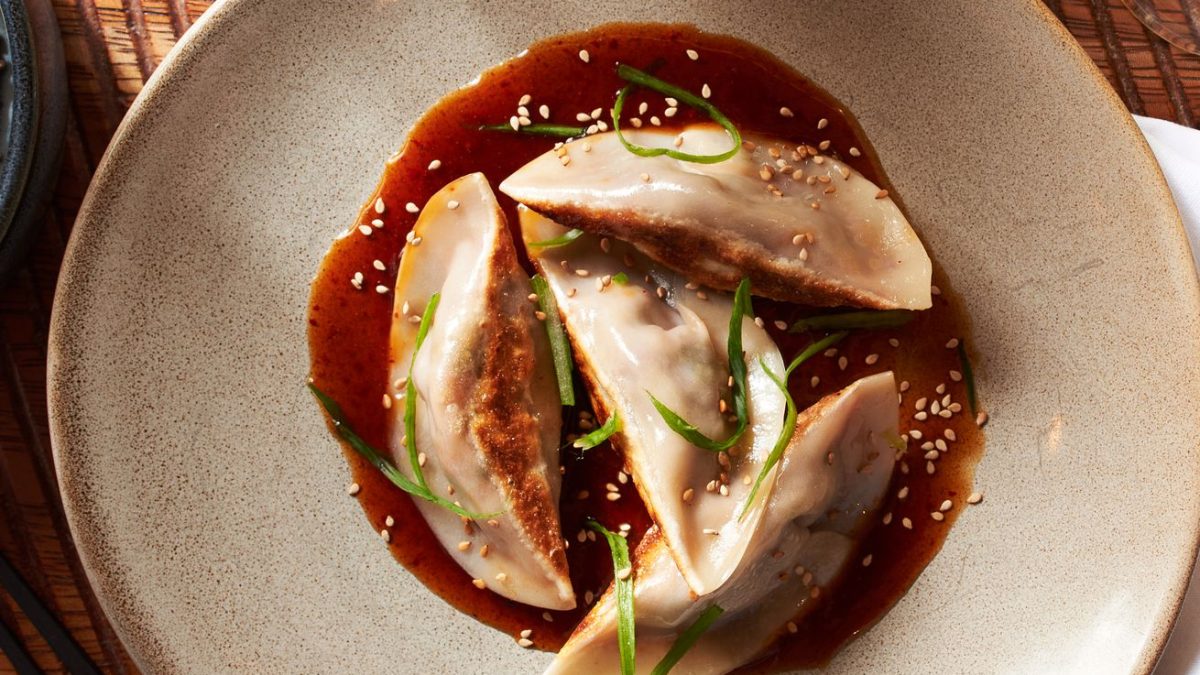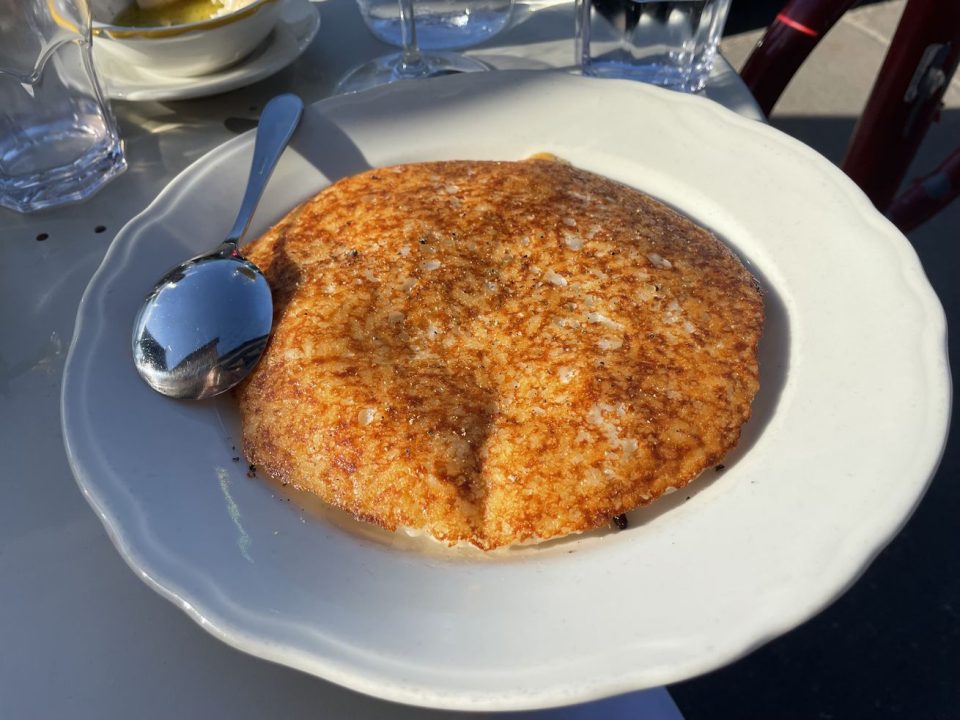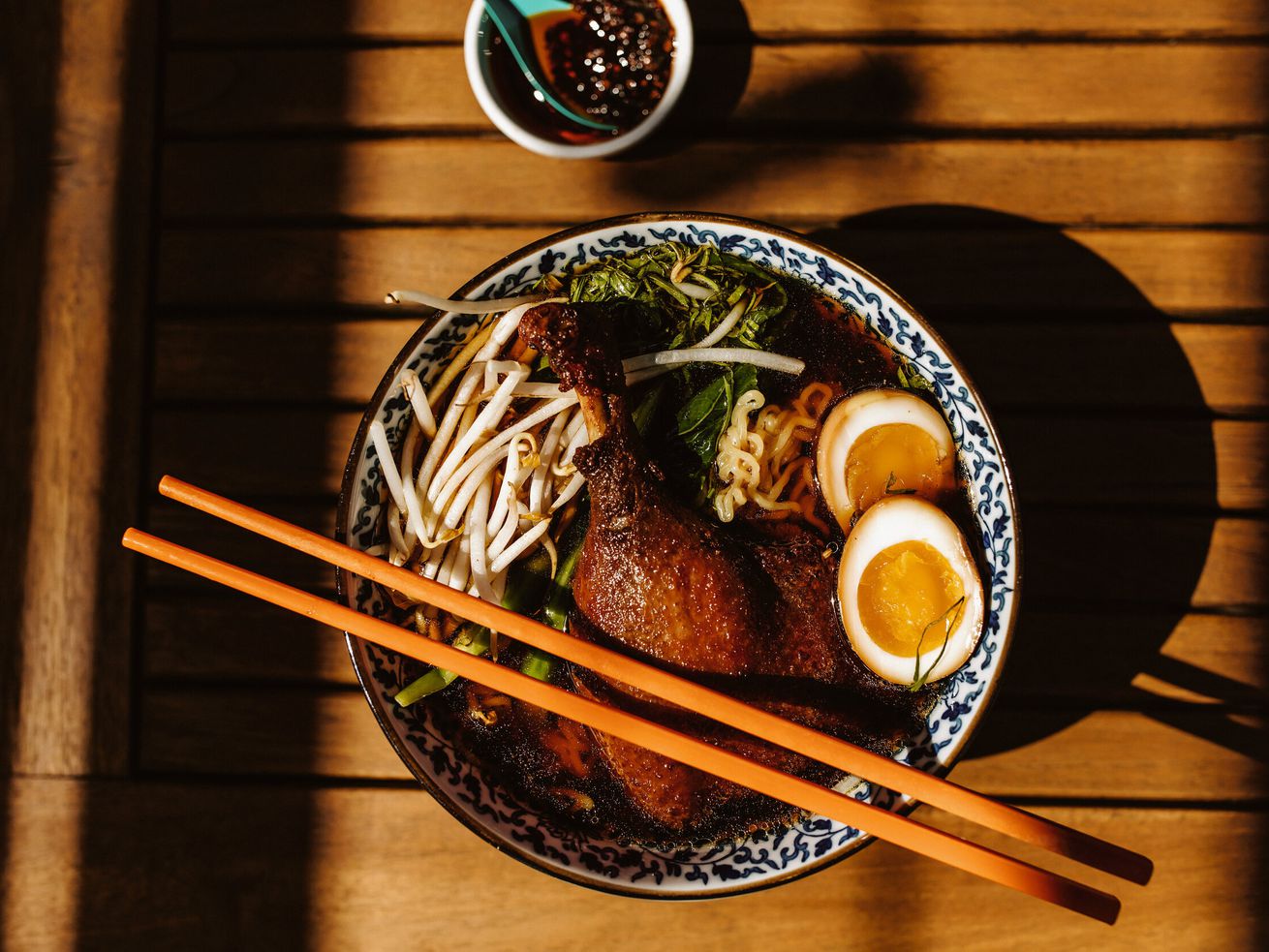
21 Destination Restaurants in the Twin Cities Suburbs
May 23, 2024
Minnesota landmark: The Frank Schott stone barn near Chokio
May 29, 2024Chef Ann Kim’s newest restaurant draws on her family’s history and culinary traditions, inflecting the menu with playfulness and new ideas
Much has been said about the spate of restaurant closures that has reshaped Uptown Minneapolis in the past several years — but perhaps the story lies as much with the restaurants that have stayed, and sent their roots deeper into the ground. Chef Ann Kim has shepherded two restaurants into Uptown’s uncharted new era: First, in 2021, Sooki & Mimi, her Mexican- and Korean-inflected restaurant serving barbecue pork on heirloom corn tortillas, building new bones in the space that held Lucia’s for more than 30 years. Next, Kim’s, a fast-and-fun Korean American restaurant serving Los Angeles-style kalbi and sizzling stone bowl bibimbap under the same glowing wooden latticework.
The defining mood at Kim’s, since its fall 2023 opening, has been the vibrancy and sense of fun that came with the restaurant’s homemade Spam sandwiches and Shin Raymun fries; the (initial) no-reservations format; the Bad Bunny soundtrack. But the well of memories and family history the restaurant draws from runs much deeper, tracing back to Kim’s roots in Korea; her Midwestern upbringing in Apple Valley; and her own distinctive legacy as a chef — the son-mat, or “hand taste,” that she inherited from her mother and subsequently applied to every restaurant she has opened, where she shapes her dishes with precision, intuition, and a small dose of irreverence.
“People kept asking, is this really traditional Korean food? What is Korean American food?” Kim says. “I can’t explain what that is for other people. I know what it is for me. This food that I represent is Korean American from my perspective, from my journey — and really, it’s the food that I like to eat.”
Here’s a deep-dive look at several of Kim’s most exciting and personal dishes.
Bindaetteok
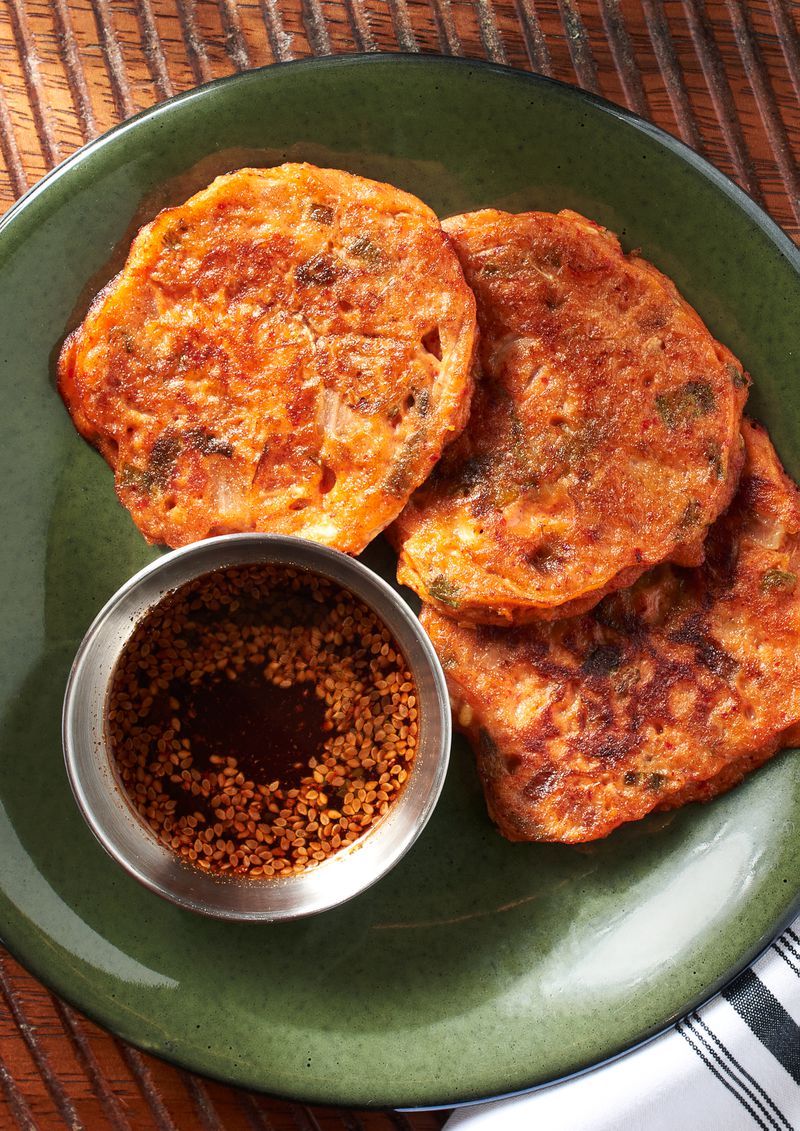
These crispy-edged pancakes are made from a base of mung beans that are soaked, pureed, and combined with short-grain rice. Kim folds kimchi — her mother’s recipe — into the batter, adding fermented funk and textural intrigue. The bindaetteok are pan-fried and served with a soy vinegar sauce for dipping. They’re one of the most personal items on the menu, Kim says: Her mother often ate bindaetteok in the small North Korean village where she grew up, before the war forced her family to flee on foot to the south. It also happens to be the first Korean dish that Kim brought to a Minnesotan potluck — she was nervous to introduce it, she says, but it was the first thing to get eaten up. “That was the first dish that crossed that line of [me] being ashamed of it, and then [it] being accepted,” she says.
Stone bowl bibimbap
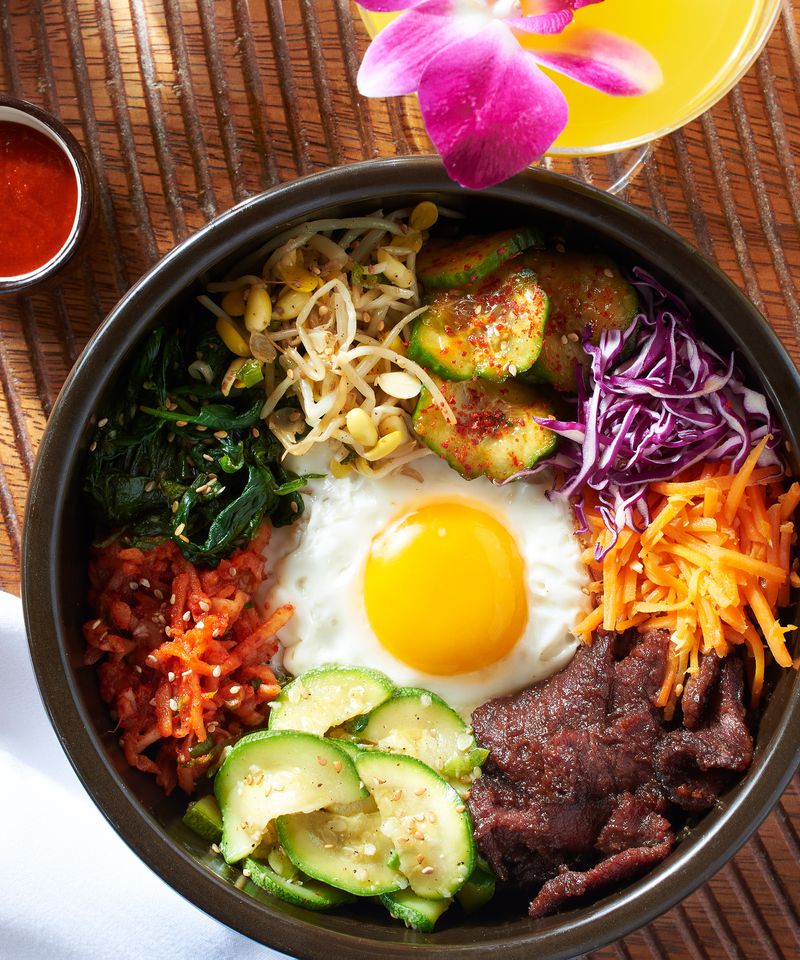
The stone bowl bibimbap is the restaurant’s top-selling dish — and its most labor-intensive, Kim says. The bowl is heated over a burner until it’s searing hot, so that the rice, when placed inside, crisps. The dish is finished with a kaleidoscopic wreath of bulgogi and various banchan (Korean cucumbers, tender soybean sprouts, marinated spinach dotted with sesame seeds), crowned with a soft sunny-side-up egg, and served to tables still sizzling. Each element requires its own dedicated prep time — which is a bit ironic, Kim says, because when she was a kid, bibimbap was typically an improvised meal made with leftovers. Her mother would use meat if they had it, or otherwise fry an egg, combining banchan from previous meals and drizzling the whole dish with chogochujang. “I think people here assume that bibimbap is always in a stone bowl,” Kim says. “Traditionally in a household, it’s just hot rice and then everything else is cold and mixed up. I think it’s great both ways — it adds a little bit of drama when you hear a sizzling plate.”
Banchan
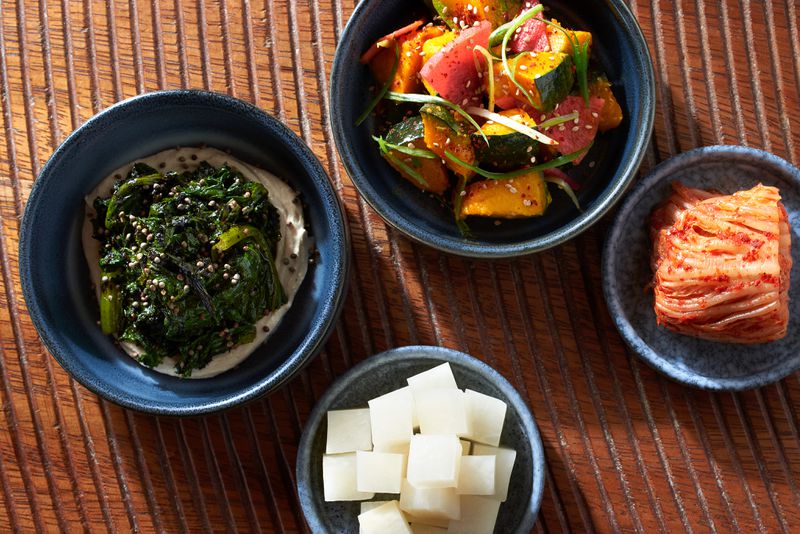
Banchan — which means “side dish” — may be the most seasonal section of Kim’s menu, a canvas for playfulness and innovation. “There are hundreds and hundreds of different side dishes that Koreans eat with their meal,” Kim says. “I decided to have a little fun and do something a little nontraditional to start off with.” Two of the first banchan she put on the menu were smoky charred mustard greens with salsa matcha and nutty perla seed over a smear of tofu tahini, a dish reminiscent of Sooki & Mimi’s Mexican cuisine-influenced menu. Roasted kabocha squash in a rice wine sesame vinaigrette, served with pickled radish, was another. Two constants on the banchan menu are the napa kimchi and the dongchimi kimchi, the former fiery and tangy and the latter delivering a crisp minerality. Both are her mother’s recipes.
Salmon tartare
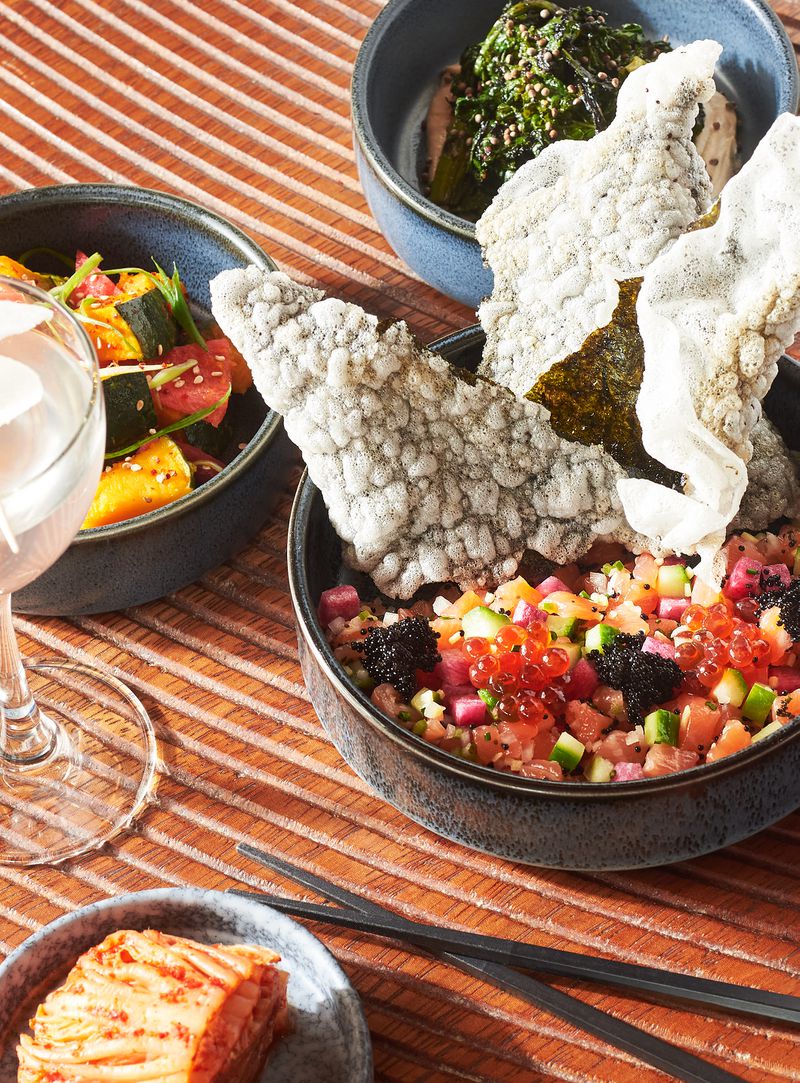
Before her family settled in Apple Valley, Kim grew up in Busan, on the southern tip of the Korean peninsula, where seafood is abundant. Thus the inspiration for her salmon tartare, one of the restaurant’s debut dishes. Gem-like morsels of salmon, folded together with cucumber and radish and crowned with tobiko and salmon roe, are served with a fluted cracker made from rice paper and nori glued together with water; after being set to dry overnight, it’s fried into its rippled form. Kim recently evolved the dish into a “hwe dup bap” cured salmon bowl with furikake barley rice and a gochujang vinaigrette, which is somewhat like a Korean version of a poke bowl, she says.
Ssam
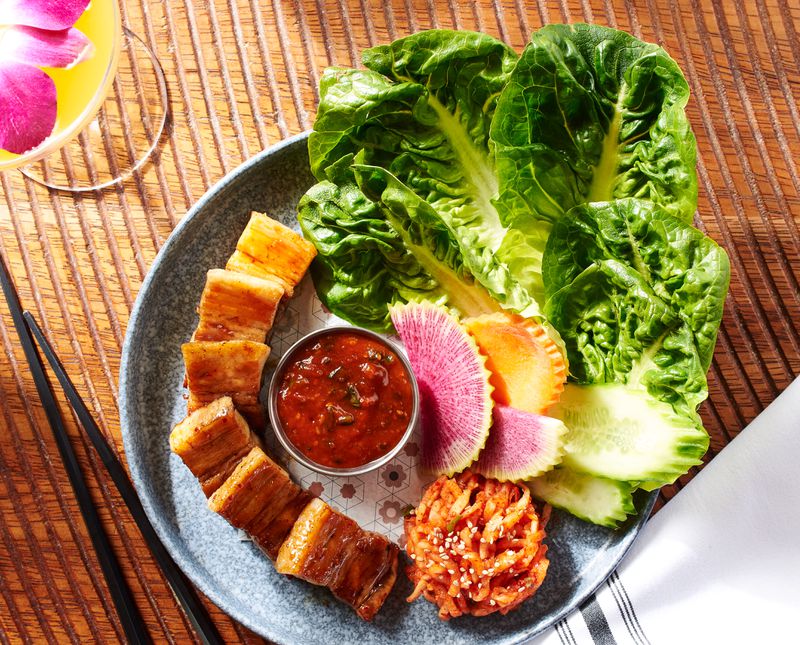
Kim emphasizes the versatility of ssam — it can be made with almost anything, as long as lettuce and fresh herbs are on hand. “Growing up, we would put a little rice with a little bit of ssamjang,” she says. “But if you’re really lucky, it was usually with some kind of barbecue pork, beef, or chicken.” Kim’s offers various barbecued meats, served ssam-style if diners so choose; a pork belly version is pictured here. In Korea, Kim says, the pork would traditionally come boiled — here, she braises it, presses it in dashi (a Japanese stock), and finishes it with a sweet glaze. It’s served with ssamjang, kimchi, and, of course, lettuce wraps. Los Angeles-style kalbi is currently on the menu — not the traditional flanken-style bone-on short rib, Kim says, but a hanger steak version. Grilled medium rare and sliced thin with onions and shishito pepper, it’s served with scallion salad.




